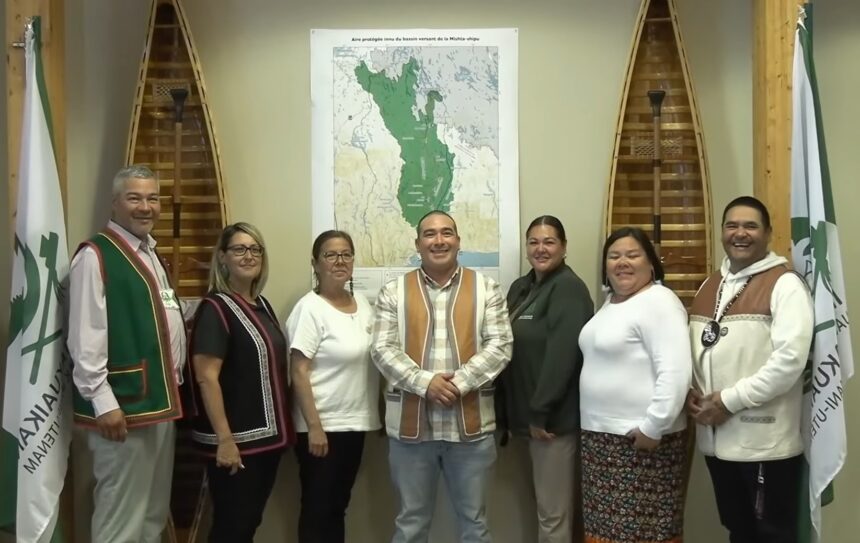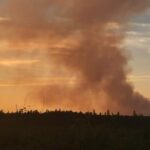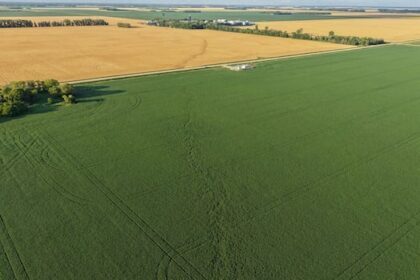The Innu Council of Uashat mak Mani-Utenam (ITUM) and its Chief Jonathan Shetush—on his 100th day in office—announced the establishment of a protected area running the full length of the Moisie River in eastern Quebec. The project is called the Innu Protected Area of the Mishta-shipu (Moisie River) Watershed. André Michel, director of ITUM’s Office for the Protection of Rights and Territory, said the Moisie, known in Innu-aimun as “Mishta-shipu,” or “The Great River,” is central to the lives of the community. “The entire history of the Innus of Uashat mak Mani-utenam is based on this river,” Michel told APTN News. “Our ancestors were nomads who spent 10 months of the year inland. This was the main route of penetration that led inland, where they spent the whole winter searching for caribou.” The Moisie meets the St-Lawrence near the Mani-utenam Innu reserve, which, together with its sister community of Uashat, flanks the city of Sept-Îles eleven hours northeast of Montreal. Michel is a biologist by training, specializing in migratory and woodland caribou, and Atlantic salmon. Though director of the organization for six years, he has worked with ITUM’s Office for the Protection of Rights and Territory since 2004, and has handled the Moisie River file that entire time. His office prepared maps of the Moisie River protection area, whose aim is to preserve caribou and salmon, as well as Innu traditional portages. Map of the Innu Protected Area of the Mishta-shipu (Moisie River) Watershed. Image courtesy of ITUM “When the government sets criteria for recognizing protected areas,” he explained, “it bases those criteria on biodiversity, wildlife species, etc. Whereas for us, our protected area is also clearly identified on the map, and the main priority is Innu heritage.” For Michel and others, the portages, indicated on the map in Innu-aimun, are ancestral sites. “We have clearly identified the main priority that we are also trying to protect, which is not recognized among the criteria that the government is implementing in terms of the validity of protected areas,” he said. Beginning in 2003, the Quebec government proposed the Moisie River Aquatic Reserve project, but it failed to secure the support of Uashat mak Mani-utenam community members. Michel said a key failure of the Moisie River Aquatic Reserve project was its limitations, as it only protected part of the territory and the river’s watershed. “In our project, it’s the entire watershed, the entire hydrographic network where every drop of water flows out through the Moisie River,” Michel said. “All of that is protected now, but it’s a slightly more ambitious and demanding project.” Read more: Hydro-Quebec plan for economic partnerships with Indigenous communities met with skepticism Quebec Innu say Newfoundland and Labrador, Quebec living in ‘bygone era’ over mining rights The previous project left a tributary of the Moisie unprotected, and Michel says his staff believed the Quebec government was keeping those areas aside for potential logging. ITUM’s project aims to protect the Moisie all the way to the border of Newfoundland and Labrador. “The projects we submitted for protection may not be accepted in their entirety,” Michel said. “But as a government, even if the Quebec government does not agree with the protected area projects, we, as Innu, will protect them and recognize them as Indigenous protected areas. If there is development in that territory, whether it be forestry, hydroelectric, or mining, we will oppose all projects in that protected area.” A representative for the office of Benoit Charrette, minister of the Environment, said in a statement to APTN News, “We welcome the initiative of the Uashat community, which is in line with our desire to develop protected areas in collaboration with Indigenous nations. This project, submitted as part of the government’s call for projects, contributes to our goal of conserving 30% of the territory by 2030 and is currently moving forward through regional consultation.” In addition to development obstacles, a key challenge for ITUM is the existence of Camp Adams, a privately owned fishing camp established on the river in 1907. Between the 1970s and 1980s, Quebec went through a process of stripping private hunting and fishing clubs of their licenses to make as much of the province as possible accessible to the public. In the late 1970s, Quebec governments stopped giving out new leases for private hunting and fishing clubs, and soon after, canceled most existing leases for over 1,000 private clubs. Club Adams is one of the few privately owned clubs in Quebec to retain its lease and exclusive rights to a river. On June 15, three weeks after his election, Chief Jonathan Shetush led a flotilla of canoes and boats carrying some 60 Innu to Camp Adams, where some set up camp, and others removed the Quebec flag, raising their own flag in its place. Shetush and the boaters demanded Quebec expropriate the club and return the river rights to the Innu for them to govern according to their values. ITUM said is not opposed to all development projects, and Michel said they have accepted projects in other regions of the Innu ancestral territory known as the Nitassinan. So ITUM is not closed to business, but Michel stresses some areas will remain protected no matter what. Continue Reading
Innu Nation in Quebec establishes entire Moisie river as protected area

Leave a Comment










